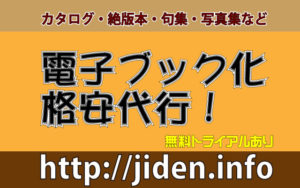
(絵:吉田たつちか)
Cricket-based food has been gaining attention lately. It seems that there are many negative opinions about it, such as "Why do we have to eat insects?", "I can understand eating locusts since people have eaten them for a long time, but crickets?", and "What about the safety?" There seem to be various opinions.
However, it seems that the true feelings of most people are "I don't want to eat it because it's gross." Humans tend to have a strong aversion to unfamiliar foods, and this recent cricket-eating controversy reminds me of the "meat-eating refusal" after the Meiji Restoration in Japan.
Nowadays, Japanese people eat meat without any issues, but the meat-eating refusal after the Meiji Restoration had deep roots. When it came to meat, the Japanese ate wild animals like deer, boar, rabbits, and tanuki (raccoon dogs) as "medicinal food" during the Edo period. They even ate dogs and cats to supplement their protein intake.
Now, eating tanuki, dogs, and cats may elicit a "yuck" response, but this sensation is precisely what food culture is about. During the Meiji era, cows were regarded as valuable labor, serving as substitutes for farming machines, and were not seen as food, with a few exceptions like in Hikone (Shiga Prefecture). Pigs were only raised in some regions like Kagoshima and Okinawa and were generally seen as impure animals.
In other words, during the Edo period, even though they ate wild animal meat, they didn't have a habit of eating cows and pigs like they do today. This is similar to how people now react with "yuck" to eating crickets and other insects.
In the Meiji era, the Japanese government noticed that the physique of the Japanese people was significantly inferior to that of foreigners, possibly due to not eating meat. They then lifted the ban on meat consumption and encouraged it, but changing food culture was not easy. The trendy "beef pot" restaurants of the Meiji era were initially considered exotic, with young people and manual laborers eating there as a test of courage.
The Meiji government was troubled and decided to have the emperor, the most sacred and respected figure in Japan, eat meat to enlighten the masses. They served beef to Emperor Meiji and published the news in newspapers. This caused an uproar among mountain worshipers, who stormed the Imperial Palace in protest, leading to the shooting deaths of four intruders.
Introducing a new food culture can provoke strong rejection from people. That's why it's not surprising that Japanese people today show intense aversion to eating crickets. However, people from all five continents have a history of eating insects. In ancient Greece and Rome, insects were widely consumed, with Aristotle stating, "Cicadas are very delicious." In Judaism, which has many food taboos, locusts are allowed according to the Old Testament, and John the Baptist, who baptized Jesus Christ, is said to have eaten locusts according to the Gospels.
The current interest in insect consumption is due to the need to secure sufficient protein in preparation for an increasing global population, potentially reaching 10 or 12 billion people. What will happen in the future?
On a personal note, when I was in my twenties, I worked as a live-in farmhand in Yatsugatake, Nagano Prefecture. During that time, I was treated to live bee larvae and bee larvae rice. It was subtly sweet and incredibly delicious.
コオロギ食が話題になっています。どうも否定的な意見が多いようです。「なんでムシなんて食べないといけないのか」とか「むかしから食べていたイナゴならまだしも、コオロギなんて」とか「安全性はどうなのか?」などなど、いろいろな意見があるようです。
しかしほとんどの人のホンネは「キモチワルイからヤダ」というものであるみたいですね。
人と言う生き物は、食べ慣れないものに対して、強烈な拒否反応を示すようで、今回のコウロギ食騒動をみていて思い出したのは、明治維新後の「肉食拒否」です。
いまでこそ、日本人は普通にお肉を食べますが、明治維新後の肉食拒否は根深いものがありました。肉食といっても、日本人は江戸時代「薬食い」といってシカやイノシシ、ウサギやタヌキといった野獣は、伝統的に食べていたのです。野獣どころか、イヌやネコも普通に食べてたんぱく質を補充していました。
いまやタヌキ・イヌ・ネコなんて「うげ~」となりますが、ここらへんの感覚がまさに食文化なのです。
明治時代、ウシは家の中に牛舎を作ったり、あるいは土間で飼ったりする家族同然であり、ウシは耕運機替わりになる貴重な労働力。彦根(滋賀県)など一部をのぞき食べ物としては見ていませんでした。
ブタは鹿児島や沖縄など一部の地方でしか飼われておらず一般的ではなく、むしろ穢れた動物として見なされていたのです。
つまり江戸時代は、獣肉は食べていても、いまのようにウシやブタを食べる習慣はほぼなく、いまの人がコオロギなどの虫食に「うげ~キモチワルイ」となるようなものだったのです。
それが明治時代になって、日本政府は外国人に比べると日本人の体格がひどく劣っていることに気が付きます。その原因は肉を食べないからではないかと・・・
そして肉食解禁と奨励をしますが、食文化はなかなか変えられない。明治時代、流行ったとされる「牛鍋屋」も最初はゲテモノ扱いで、血気の若者や肉体労働者が度胸試しで食べるようなものでした。
さて困ったのは明治新政府。それでは日本でもっとも神聖にして頂点に立つお方に、お肉を食べて庶民を啓蒙しようじゃないかとなった。そして明治天皇に牛肉を召し上がっていただき、それを新聞に掲載した。
すると大衆が驚いたのなんのって、明治天皇が牛肉を食べたことを知った山岳信仰の行者の集団が、抗議のため皇居に白装束に身を固め日本刀を持って乱入。そのうち4人が射殺されるという事件まで起こってしまうほどでした。
新しい食文化を取り入れるということは、それほど人に拒否反応を起こさせるもの。だからいまの日本人が、コオロギ食に強烈な拒否反応を示すのも無理からぬことなのでしょう。
ただ、五大陸の人類はすべて、昆虫を食べて来た歴史があります。古代ギリシャや古代ローマでも盛んに食べられていてアリストテレスは「セミはとても美味しい」と述べています。
食のタブーが多いユダヤ教でもイナゴは食べてもいいと旧約聖書に書かれており、イエス・キリストに洗礼を施した洗礼者のヨハネはイナゴを食べていたと福音書にあります。
いま昆虫食が注目されているのは、急激な人口増でやがて人口が100億、120億人と増えたときに備えて、十分なたんぱく質を確保したいから。さて今後はどうなるのでしょうか?
ちなみにぼく個人は20代の頃、長野県の八ヶ岳の農家に住み込みで農業のアルバイトをしていたのですが、そのとき生きた蜂の子や蜂の子ごはんをご馳走になったことがあります。ほんのり甘くて実に美味でございました。
(文:巨椋修(おぐらおさむ) 食文化研究家)2023-04
蟋蟀食品最近受到了关注。似乎有很多负面意见,如“为什么我们必须吃昆虫?”、“虽然人们吃蝗虫已经有很长时间了,但是蟋蟀这种东西怎么吃得下?”以及“安全性如何?”等等,看起来有各种各样的意见。
然而,大多数人的真实感受似乎是“因为恶心,所以不想吃。”人类似乎对不熟悉的食物产生强烈的抗拒反应,这次蟋蟀食品争议让我想起了日本明治维新后的“拒绝食肉”。
如今,日本人毫无问题地食用肉类,但是明治维新后的拒绝食肉现象根深蒂固。在江户时代,日本人吃野生动物如鹿、野猪、兔子和狸猫作为“药食”,甚至还吃狗和猫来补充蛋白质。
现在,吃狸猫、狗和猫可能会引起“呕”的反应,但这种感觉恰恰是食物文化的体现。在明治时代,牛被视为有价值的劳动力,代替农耕机器,除了彦根(滋贺县)等少数地方外,并没有被视为食物。猪只在鹿儿岛和冲绳等一些地区饲养,并不普遍,甚至被视为不洁的动物。
换句话说,在江户时代,尽管人们吃野生动物肉,但几乎没有像现在这样吃牛肉和猪肉的习惯。这就像现在的人对蟋蟀等昆虫食品产生“呕心”的反应一样。
到了明治时代,日本政府注意到与外国人相比,日本人的体格差距很大,可能是因为不吃肉。于是他们解除了对肉类食用的禁令,鼓励食用肉类,但改变饮食文化并不容易。明治时代,流行的“牛肉锅”餐馆最初被认为是怪物,年轻人和体力劳动者都要去那里尝试勇气。
明治政府感到困惑,决定让最神圣、最受尊重的皇帝吃肉来启蒙民众。他们给明治天皇上了牛肉,然后将这个消息刊登在报纸上。这导致山间信仰修行者群体感到震惊,他们抗议,穿着白色服装,手持日本刀闯入皇宫。其中四人被击毙。
引入新的饮食文化可能会引起人们的强烈拒绝反应。这就是为什么现在的日本人对蟋蟀食品表现出如此强烈的抗拒反应也不足为奇了。然而,五大洲的人类都有吃昆虫的历史。在古希腊和古罗马,昆虫广泛食用,亚里士多德说:“蝉是非常美味的。”犹太教有很多饮食禁忌,但蝗虫在旧约圣经中是允许食用的,而据福音书记载,给耶稣基督施洗的洗礼者约翰曾吃过蝗虫。
目前关注昆虫食品的原因是,在人口迅速增长,可能达到100亿或120亿人的情况下,需要确保充足的蛋白质来源。未来会发生什么呢?
在个人经历方面,当我二十多岁的时候,我曾在长野县八幡岳的农家打工,期间品尝过活蜜蜂幼虫和蜜蜂幼虫饭。味道微甜,非常美味。




